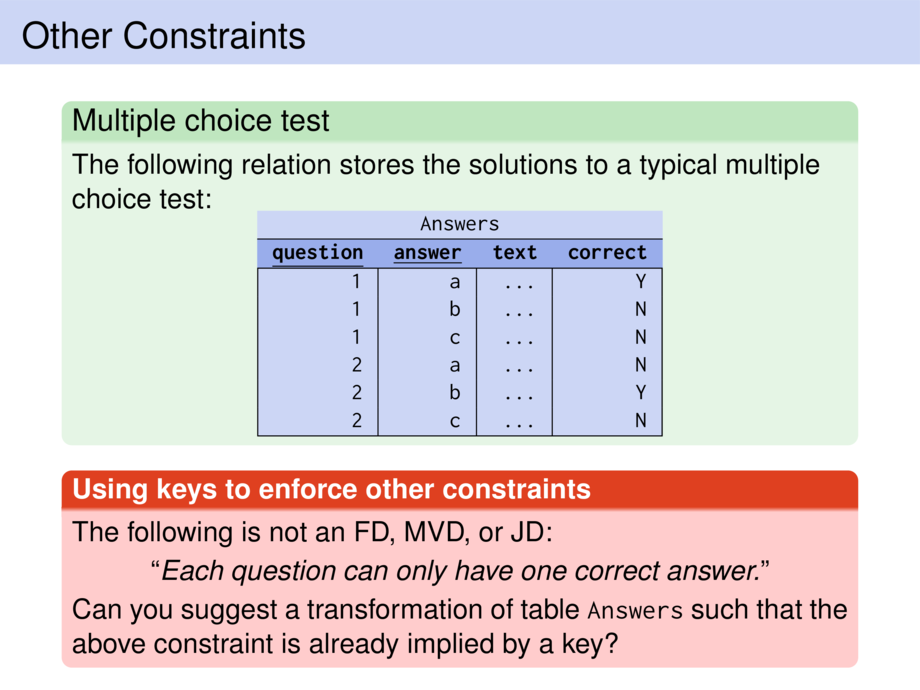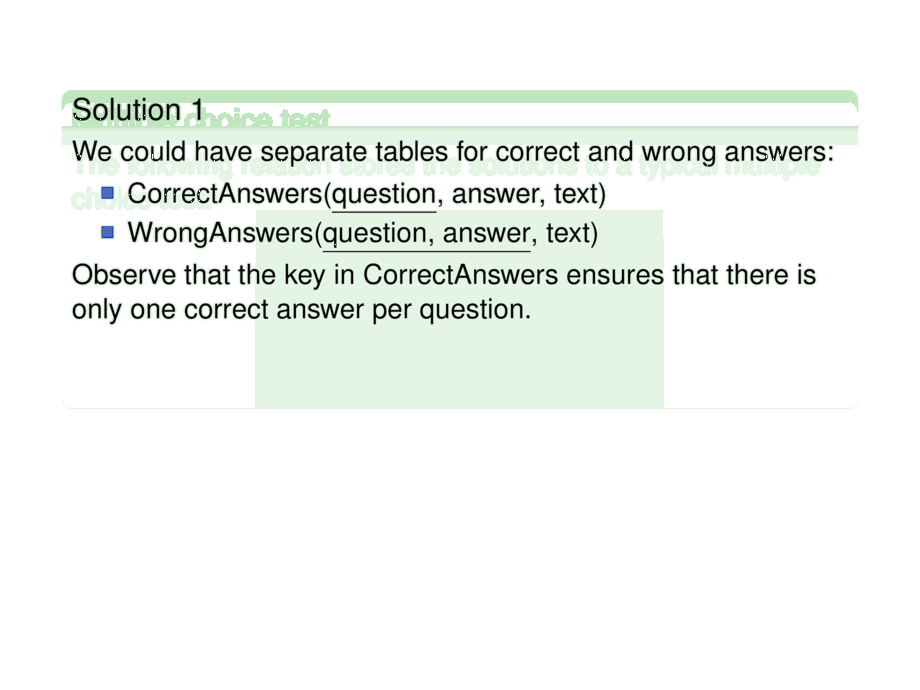



































































































289/291
\begin{frame}
\frametitle{Other Constraints}
\begin{exampleblock}{Solution 1}
We could have separate tables for correct and wrong answers:
\begin{itemize}
\item CorrectAnswers(\key{question}, answer, text)
\item WrongAnswers(\key{question, answer}, text)
\end{itemize}
Observe that the key in CorrectAnswers ensures that there is only one correct answer per question.
\pause\smallskip
However, requires a new inter-relational constraint:
the same question with the same answer may not appear in both tables.
\end{exampleblock}
\pause
\begin{exampleblock}{Solution 2}
We could have separate tables for correct and wrong answers:
\begin{itemize}
\item Questions((\key{question}, correctAnswer) $\to$ Answers, text)
\item Answers(\key{question} $\to$ Questions, \key{\vphantom{q}answer}, text)
\end{itemize}
Here the correct answer is indicated via a foreign key in Questions referencing the Answers table.
\end{exampleblock}
\end{frame}

